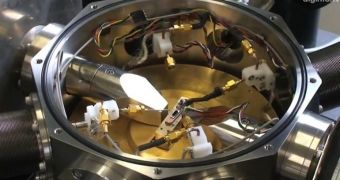Experts in Japan and Germany announce the development of a new device that can convert sound waves into spin current. The electricity can then be transferred through a standard wire. Through this approach, it is also possible to obtain magnetic energy as well
The research was led by PhD student Ken-ichi Uchida and professor Eiji Saitoh, who both holds appointments with the Tohoku University Institute for Materials Research (IMR).
The international collaboration also included experts from the Tohoku Graduate School of Engineering, the University of Keiserslautern, in Germany, and the Japan Atomic Energy Agency (JAEA).
Together, the experts were able to create a mechanism that obtains electromagnetic energy from acoustic wave injection. This approach allows the team to extract the aforementioned energy even from nonmagnetic insulators, which means that the device could be used with any materials.
All objects in the environment vibrate, and therefore produce sounds, the team explains. What this implies is that inexhaustible sources of magnetic and electric energy can be found all over the place. If the new technology matures enough, then it may be possible to put that energy to great use.
“This achievement is expected to contribute the improvement of the degrees of freedom for spintronics device design and the development of next-generation energy-saving electronic technology with a very low impact on the environment,” the IMR team explains.
“Spintronics, the new electronic technology which actively exploits spin freedom of electrons, is expected to develop novel drive principles of electric and magnetic devices and to save energy of them,” the two investigators add.
The device the collaboration created works by directing the injected sound waves between metal layers and magnetic materials. The magnetic spin current that is produced as this happens is picked up by two electrodes located above, which then whisk it away.
According to the investigators, the entire operating principle of the new device revolves around the actions of the reverse spin Hall effect, which turns the magnetic spin into an electrical voltage.
At this point, the joint team is working hard towards developing materials that could produce an even higher voltage, seeking to perfect the new technology so that it may one day be used in large-scale applications, Engadget reports.
Video description: Researchers at Tohoku explain the basic operating principles of the new device. Video credit: DigiInfoNews YouTube Channel
 14 DAY TRIAL //
14 DAY TRIAL //